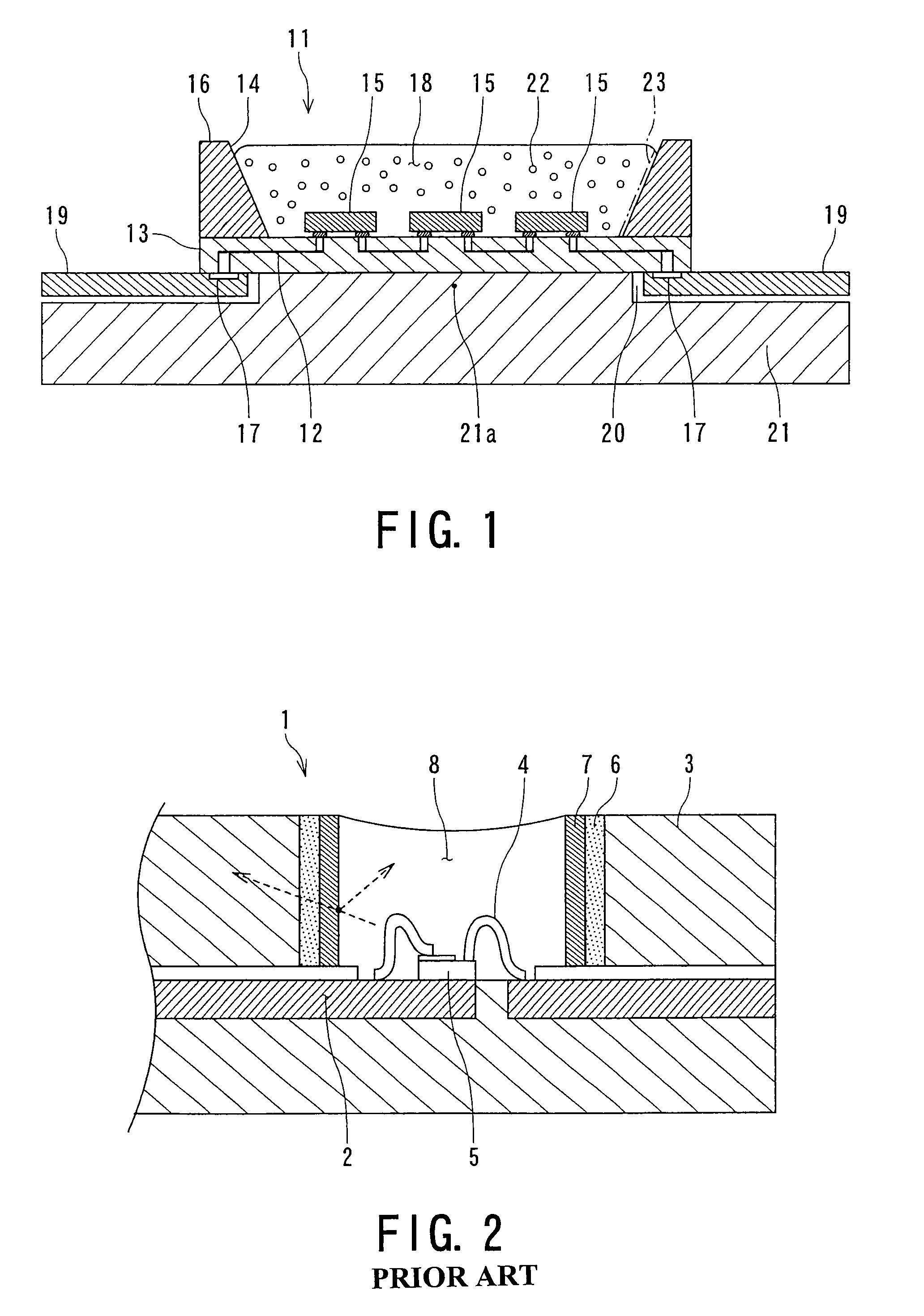Light emitting device, lighting equipment or liquid crystal display device using such light emitting device
a technology of light emitting device and light emitting device, which is applied in the direction of semiconductor devices, electrical devices, basic electric elements, etc., can solve the problems of led chip failure, low thermal conductivity, and poor heat radiation performance of conventional light emitting apparatus, so as to increase critical current, increase heat radiation performance, and high thermal conductivity
- Summary
- Abstract
- Description
- Claims
- Application Information
AI Technical Summary
Benefits of technology
Problems solved by technology
Method used
Image
Examples
example 1
[0043]FIG. 1 is a sectional view showing an embodiment of the light emitting apparatus according to the present invention. Namely, the embodiment of the light emitting apparatus 11 is configured to comprise: an aluminum nitride co-fired substrate (AlN multi-layered substrate) 13; three LED chips 15 as light emitting devices mounted on a front surface of the co-fired AlN substrate through a flip-tip method; and a reflector 16 composed of kovar having an inclined surface 14 for reflecting a light emitted from the LED chips 15 as light emitting devices to a front side direction, the reflector 16 being solder-bonded to a surface of the aluminum nitride co-fired substrate 13 so as to surround a circumference of the LED chips 15.
[0044]As the above co-fired substrate (AlN multi-layered substrate) 13, a co-fired AlN multi-layered substrate having a high thermal conductivity of 200 W / m·K, a two-layered structure and a size of 5 mm-length×5 mm-width×0.5 mm-thickness, was used.
[0045]Further, t...
example 2
[0062]The same manufacturing process as in Example 1 was repeated except that a metal film 23 composed of silver (Ag) and having a thickness of 2 μm was formed onto the inclined surface 14 of the reflector 16 shown in FIG. 1, thereby to prepare a light emitting apparatus of Example 2.
example 3
[0063]The same manufacturing process as in Example 1 was repeated except that the heat sink 21 shown in FIG. 1 was not attached, thereby to prepare a light emitting apparatus of Example 3.
PUM
 Login to View More
Login to View More Abstract
Description
Claims
Application Information
 Login to View More
Login to View More - R&D
- Intellectual Property
- Life Sciences
- Materials
- Tech Scout
- Unparalleled Data Quality
- Higher Quality Content
- 60% Fewer Hallucinations
Browse by: Latest US Patents, China's latest patents, Technical Efficacy Thesaurus, Application Domain, Technology Topic, Popular Technical Reports.
© 2025 PatSnap. All rights reserved.Legal|Privacy policy|Modern Slavery Act Transparency Statement|Sitemap|About US| Contact US: help@patsnap.com


